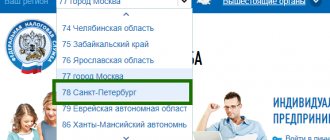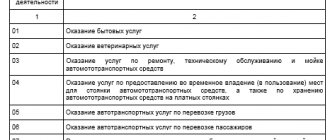Kontur.Accounting - the optimal service for UTII
Automated calculation of taxes and transactions with employees.
The simplest accounting possible. The service itself will generate KUDiR, declaration and reports. You can combine modes. Try for free
The UTII regime provides many advantages to small businesses using it. At the same time, imputation has features depending on the direction of activity of a legal entity or individual entrepreneur. One of the possible types of business in this special mode is catering. In this article we will look at what important steps are involved in opening such an establishment. It is worth remembering that catering can operate on UTII if this type of activity is permitted in your constituent entity of the Russian Federation.
Basic Concepts
UTII is a tax that is paid to the budget of the Russian Federation. Taxpayers who choose this type of taxation are exempt from paying such fees as income tax for a legal entity or personal income tax for an entrepreneur, value added tax, and property taxes. This tax does not depend on the actual amount of expenses incurred or income received. It is calculated on the basis of the basic yield, which is entered by the tax authority. For different types of activities, the size of the basic profitability is different. Also, when calculating the tax, you need to know the size of the physical indicator, which can be the number of employees employed in a given type of activity, the number of square meters of retail space, the number of sales points, etc.
Important! The tax rate is set at 15%, but this rate can be changed by regions. The minimum rate is set by the code as 7.5%, and the maximum is 15%.
Non-standard catering
Today it is no secret that it is more profitable to pay UTII than general regime taxes or the simplified tax system. Therefore, many people want to become “imputed” people, but not everyone succeeds. The fact that the activity carried out by the taxpayer is mentioned in the treasured list of “imputed” types of activity does not yet guarantee the transition to UTII. It may well turn out that the taxpayer’s occupation (even though it is called the same as in the list) does not correspond to the definition of this type of activity given in Chapter 26.3 of the Tax Code of the Russian Federation.
I. Kiryushina
Let's consider the above using the example of catering.
The UTII system can be applied to the provision of public catering services provided through catering facilities:
– with a visitor service hall area of no more than 150 sq.m for each such facility (subclause 8, clause 2, article 346.26 of the Tax Code of the Russian Federation);
– do not have a visitor service hall (subclause 9, clause 2, article 346.26 of the Tax Code of the Russian Federation).
In other words, the Tax Code of the Russian Federation connects the possibility of using UTII for this type of activity with the presence of two circumstances:
1) provision of public catering services as such;
2) provision of these services through a visitor service hall or another facility that does not have a visitor service hall (kiosk, tent, etc.).
Public catering services include services for the production of culinary products and (or) confectionery products, the creation of conditions for the consumption and (or) sale of finished culinary products, confectionery products and (or) purchased goods, as well as for leisure activities (Article 346.27 of the Tax Code of the Russian Federation ).
What the process of manufacturing culinary products is is known to everyone, and, as a rule, it does not need explanation. Although there are exceptions.
For example, an organization that produces and sells freshly squeezed juices doubted what type of activity it was carrying out.
In response to her request, the Russian Ministry of Finance quite rightly classified her activities as providing public catering services (letter dated April 28, 2007 No. 03-11-05/85).
Let us note that Chapter 26.3 of the Tax Code of the Russian Federation does not contain a specific list of public catering services. Therefore, if difficulties arise in qualifying the activities carried out by an organization, the Ministry of Finance of Russia suggests contacting the All-Russian Classifier of Services to the Population OK 002-93, approved by Resolution of the State Standard of Russia dated June 28, 1993 No. 163 (letter dated June 15, 2007 No. 03-11-04/3 /218).
For example, organizations that feed and serve clients along the route of passenger transport provide catering services (code 122308 OKUN).
We have already written about what is meant by creating conditions for the consumption of finished culinary products in issue 5 of the magazine “Small Accounting” for 2006.
A public catering facility with a hall for serving visitors is understood as a building (part of it) or structure intended for the provision of public catering services, which has a specially equipped room (open area) for the consumption of finished culinary products, confectionery and (or) purchased goods, as well as for leisure activities.
If an enterprise does not have a specially equipped room (open area) for the consumption of finished culinary products, confectionery and (or) purchased goods, then it provides catering services through a facility that does not have a customer service area. This category includes kiosks, tents, vending machines and other similar public catering outlets (Article 346.27 of the Tax Code of the Russian Federation).
There is no doubt that the activities of those organizations and entrepreneurs who feed visitors in restaurants, cafes, canteens, snack bars, bars, etc. are subject to transfer to UTII. The same can be said about those who produce culinary products and sell them to consumers - individuals.
But in this article we will talk about “non-standard” catering. With this term we decided to unite all those who cannot be classified as catering in its generally accepted sense. In addition, “unusual” situations that an ordinary caterer may find themselves in will be considered.
Everyone wants to eat, always and everywhere: at work and at school, on weekdays and on holidays, on a cruise and at a conference. This list can be continued indefinitely.
Accordingly, there are companies that are ready, for a fee, to prepare food (from their own products or from the customer’s products), deliver it to the right place (or prepare it at the place specified by the customer), organize the consumption of culinary products (set the table, serve dishes, etc.) etc.) to serve clients.
Is your activity entrepreneurial?
Catering as a type of entrepreneurial activity is transferred to UTII. Entrepreneurial activity is an independent activity carried out at one’s own risk, aimed at systematically obtaining profit from the use of property, sale of goods, performance of work or provision of services (Article 2 of the Civil Code of the Russian Federation).
If the provision of catering services meets the criteria of entrepreneurial activity, UTII may be applied to these services.
According to the Russian Ministry of Finance, as stated in letter No. 03-11-04/3/118 dated April 17, 2007, one of these signs is charging workers for lunch.
The conclusion follows from this: the provision of catering services for employees of an organization, which is provided for a fee by deducting the cost of meals from wages, is recognized as entrepreneurial activity and, under certain conditions, may be subject to UTII taxation.
However, judicial practice refutes such a conclusion (see, for example, resolutions of the Federal Antimonopoly Service of the West Siberian District dated March 22, 2007 No. F04-1693/2007(32724-A03-7), Northwestern District dated December 19, 2005 No. A56-33205/04 , Ural District dated June 13, 2007 No. Ф09-4380/07-С3 No. А71-7930/06).
The fact that the organization does not carry out entrepreneurial activities, according to the courts (decrees of the Federal Antimonopoly Service of the Volga-Vyatka District dated July 9, 2007 No. A43-17482/2006-30-469, West Siberian District dated March 22, 2007 No. F04-1693/2007 ( 32724-A03-7), dated March 14, 2006 No. F04-1018/2006(20540-A27-23), Central District dated April 13, 2007 No. A09-6535/06-15), the following facts indicate:
- the cost of lunches is deducted from employees' wages;
- the canteen serves only employees of the enterprise and is created exclusively for this purpose;
- the canteen is located on the territory of the enterprise, which excludes the possibility of access to it by unauthorized persons;
- The purpose of the canteen is not to make a profit.
Customer of services – legal entity
An agreement for catering services is concluded, as a rule, between a catering enterprise and a legal entity, while individuals use the services provided (the specifics of catering are such that it is simply impossible to do otherwise).
In our opinion, it does not matter who is the customer under the contract: a legal entity or an individual. The content of the services provided is important.
In this case, the nature of the catering enterprise’s activities does not change: it does not care who it serves – visitors “from the street” or seminar participants (tourists, enterprise employees, etc.).
Thus, a catering enterprise can be transferred to UTII, provided that the remaining requirements of Chapter 26.3 of the Tax Code of the Russian Federation for this type of activity are met.
Example
The organization entered into an agreement with a cafe to host a banquet on the occasion of the organization's anniversary. The area of the cafe service hall is 120 sq.m. The cafe provided a standard range of services to those invited to the banquet.
In this case, this cafe activity is subject to transfer to UTII.
Cashless payments
What if the customer paid for catering services by bank transfer? Could this fact prevent the organization from transferring to UTII?
No, he can not.
The issue of applying UTII in relation to catering services does not depend on the source of financing and the form of payment for these services (letters of the Ministry of Finance of Russia dated 01.06.2007 No. 03-11-04/3/190, dated 22.02.2007 No. 03-11-05/34, Resolution of the Federal Antimonopoly Service of the Central District dated July 5, 2006 No. A23-6456/05A-18-818).
Thus, for the purposes of applying UTII, any form of payment is suitable: in cash by bank transfer, mixed form of payment (part of the money for payment is received from the client in cash, and the other part is paid by bank transfer).
Is there an object? - That is the question
When a catering enterprise provides a full range of services (from the production of culinary products to serving visitors), its taxation regime depends on where the finished culinary products are consumed.
If services are provided through a catering facility that meets the requirements of Chapter 26.3 of the Tax Code of the Russian Federation, then in this case the organization is subject to transfer to UTII for this type of activity.
Note! The organization must have this object on some legal basis (for example, ownership or lease).
If catering services are provided by an enterprise through an object used (owned) by a third-party organization, then this enterprise has no grounds for applying UTII (see, for example, letter of the Ministry of Finance of Russia dated May 14, 2007 No. 03-11-04/3/156 ).
Example
The company's balance sheet includes a canteen, but there are no cooks on the company's staff. In order to organize meals for employees, the enterprise enters into an agreement with a food processing plant. The functions of the plant workers include preparing lunches and serving visitors. The plant does not rent canteen space.
If we follow the position of the Russian Ministry of Finance, then the plant must pay taxes in accordance with the general regime or the simplified tax system.
There is no object
Those catering workers who provide their services not through catering facilities will not receive UTII.
If the activities of a catering enterprise are limited only to the preparation of dishes and their delivery to the place of consumption (for example, “lunches at the office”, “pizza at home”), then such activities are not considered as an “imputed” type of activity.
Representatives of the financial department share this point of view (letters of the Ministry of Finance of Russia dated July 3, 2006 No. 03-11-02/150, dated December 20, 2005 No. 03-11-05/122).
However, one can argue with the arguments that the Russian Ministry of Finance gives to justify it.
The company produces culinary products and sells them to consumers. Its activities, in our opinion, meet the definition of catering services. But these products are not sold through a catering facility (the company does not have one). It is for this reason that the enterprise is not subject to transfer to UTII for the type of activity “providing public catering services.”
According to the Ministry of Finance, when delivering lunches to your home or office, the conditions for applying UTII in relation to retail trade are not met (see letter dated December 20, 2005 No. 03-11-05/122).
Let's take another case.
The catering company produces culinary products and supplies them to schools and temporary detention centers.
The Ministry of Finance believes that the enterprise does not provide public catering services, as defined by Chapter 26.3 of the Tax Code of the Russian Federation, because schools and temporary detention centers do not have specially equipped premises for the consumption of manufactured culinary products (canteens), as well as separate facilities for its sale (kiosks, tents, etc.) (clause 2 of the letter of the Ministry of Finance of Russia dated July 3, 2006 No. 03-11-02/150).
In our opinion, determining the taxation regime for an enterprise in no way depends on the presence (absence) of a catering facility at the customer (school). But what really matters is whether the enterprise itself has such an object.
And if the enterprise does not have such a facility, then its activities in providing catering services are not transferred to UTII.
Example.
A catering establishment (restaurant) enters into an agreement with the company that it will serve the seminar participants during the three days of the seminar. Catering services will be provided in one of the premises of the building rented by the company for the seminar.
In relation to such catering services, the restaurant cannot be transferred to UTII. He must pay taxes under the general taxation regime or under the simplified tax system.
Some organizations find themselves in very unfair situations.
These are those organizations that provide catering services in a specially designated place - a restaurant. But their problem is that the restaurant is located on a ship or on a train. Consequently, it is not part of a building or structure, as required by the definition of a catering facility. Therefore, the provision of catering services on vehicles cannot be transferred to the payment of UTII (letters of the Ministry of Finance of Russia dated June 15, 2007 No. 03-11-04/3/218, dated December 5, 2006 No. 03-11-04/3/524 ).
The law is strong, but it's law. Let's hope that legislators will eventually eliminate the existing misunderstanding.
* * *
If an organization purchases finished culinary products from other catering enterprises and delivers them to individuals, in our opinion, it is not engaged in the provision of catering services. Consequently, the organization cannot be transferred to pay UTII. This is due to the fact that in this case the main component of public catering services is missing: the organization itself does not produce anything.
Representatives of the Ministry of Finance of Russia, explaining a similar situation (see letter dated July 25, 2007 No. 03-11-04/3/295), believe that the organization’s activities cannot be classified as catering services, since it does not correspond to the definition of this concept given in Chapter 26.3 of the Tax Code of the Russian Federation.
They continue to insist that the distinctive feature of catering services is the consumption of finished culinary products on site, which follows from the provisions of Art. 3 of the State Standard of the Russian Federation “Public catering. Terms and definitions” (GOST R 50647-94).
This approach seems to us more than controversial, since if there is a definition of catering services in Chapter 26.3 of the Tax Code of the Russian Federation, there is no need to turn to GOST.
Retail trade in the sense given to this concept by Chapter 26.3 of the Tax Code of the Russian Federation, the activities of the organization also do not constitute, since it does not have an object for organizing trade.
Hello Guest! Offer from "Clerk"
Online professional retraining “Accountant on the simplified tax system” with a diploma for 250 academic hours . Learn everything new to avoid mistakes. Online training for 2 months, the stream starts on March 15.
Sign up
Calculation of UTII when opening a catering outlet equipped with a service hall
The calculation of the tax amount for public catering depends on the size of the physical indicator. For a food outlet that has a hall for visitors, the physical indicator is the number of square meters. Thus, the amount for paying tax to the budget for one month will have the following calculation formula:
Number of square meters*1000 rubles*K1*K2*15%=tax
When calculating the number of square meters, this does not include the entire cafe along with the kitchen. In this case, you only need to take into account the size of the hall in which the people who came to the cafe will eat. In order to confirm to the tax office that the size of the hall has a particular area, you need to submit either a Lease Agreement or a certificate of ownership with an explication of the premises, which will show how much area is occupied specifically by serving visitors.
Important! The size of the service hall area should not be more than 150 square meters in order to apply such a taxation system as payment of a single tax on imputed income.
Features of catering activities
According to sub.
8, 9 p. 2 art. 346.26 of the Tax Code, public catering services are provided by organizations or individual entrepreneurs that have properly equipped retail facilities. They may have trading floors or do without them. This category of premises and facilities includes many establishments: restaurants, snack bars, cafeterias, cafes and some others. Not only the Federal Tax Service Inspectorate, but also specialists from the Sanitary and Epidemiological Service are interested in this activity. This is due to the consumption of food products by visitors (cooked dishes, culinary and confectionery products, drinks). Sanitary and other requirements for these establishments are described in detail in GOST 30389-2013. It specifies not only the requirements for the premises themselves and the surrounding area, but also for the decoration of buildings and interior spaces, furniture, dishes, etc. Restaurants are classified as elite catering establishments. They offer a large assortment of exclusive dishes, alcoholic and soft drinks, various confectionery products, as well as purchased goods, including tobacco. All this is combined with high-quality service and organization of recreation and various types of entertainment for visitors.
A cafe, compared to a restaurant, has a more limited range, although it may also have specialties. The cafe also offers culinary and confectionery products made in-house and purchased - alcohol and drinks of various types (soft drinks, juices, cocktails). The café can organize entertainment and cultural events.
The main requirement for applying UTII to these establishments is the presence of a hall for serving visitors with an area of no more than 150 m2 (subclause 8, clause 2, article 346.26 of the Tax Code). This may be a separate building (or part of it), equipped for eating ready-made food and spending leisure time.
Whether UTII is applicable when selling food for delivery or pickup, find out here .
See also: “Catering “on wheels” - is it possible to switch to UTII?” .
IMPORTANT! From 01/01/2021, UTII has been abolished throughout Russia. Some regions have already abandoned the special regime. In this regard, taxpayers need to think about changing the tax regime now. Otherwise, they will automatically switch to OSNO. See here for details.
Calculation of UTII when opening a catering establishment without a service hall
If the food outlet does not have a service hall, then the physical indicator for calculating the tax is the number of workers who are engaged in this type of activity. And the amount of profitability is established by the Tax Code as 4,500 rubles.
Important! The individual entrepreneur himself, who opened a food outlet, is also included in the number of employees, regardless of whether he works at the food outlet or not.
Example 2.
IP Ivanchenko A.A. He opened a stall baking and selling pies. There are two sales cooks working at the stall. Let's calculate the amount of tax at K2=1.
Tax = 3 * 4500 * 1.868 * 1 * 0.15 = 3782 rubles - the amount of tax for 1 month.
In this example, the size of the physical indicator is the number of employees, which includes an individual entrepreneur.
Options for organizing catering on a single tax system
Catering services on the premises are represented by two types of activities.
- Catering services without a customer service area. The basic profitability in this case is 4,500 rubles/month. The physical indicator for imputation is the number of workers. If we are talking about an individual entrepreneur, he is also included in their number.
- Catering services with a hall for serving visitors with an area of up to 150 square meters. m. inclusive. For this situation, the calculation is made based on the area of such a hall (number of square meters), and the basic profitability is 1,000 rubles/month.
Examples of objects of the first group are various tents, kiosks, culinary shops at restaurants, etc. The second group of establishments includes the restaurants themselves, canteens, bars and other objects with premises equipped for feeding visitors.
From January 1, 2022, public catering organizations will not be able to work on UTII. Choose a different tax system for your cafe, restaurant or food court by comparing all available options using our free calculator. In the article, our experts answered popular questions from owners of catering and other areas about the transition from UTII. If you haven't found the answer to your question, ask it in the comments, we will definitely answer.
Reduction of tax on the amount of insurance premiums
It is important to note that the tax amount can be reduced by the amount of insurance premiums. In this case, you must be guided by the following rule:
- The tax amount is reduced by the entire amount of insurance premiums that the entrepreneur paid to the budget if the entrepreneur does not have employees;
- The tax amount is reduced by no more than half if it is an LLC or an individual entrepreneur who has hired at least one employee.
Example 3.
Malina LLC has a restaurant with an area of 100 sq.m., and a guest room of 70 square meters. The amount of insurance premiums paid in the 1st quarter of 2022 for employees is 25,000 rubles. Let's calculate the amount of UTII for payment at K2=1.
Tax=70*1000*1.868*1*0.15*3=58842 rubles. This amount can be reduced by no more than 50%, that is, by 29,421 rubles. Thus, the amount to be paid is 58842-25000 = 33842 rubles.
Is it possible to use imputation when selling food for takeaway and delivery?
Firms and individual entrepreneurs can deliver prepared food to clients’ homes or offices. We also visited the cafe and often take food to take home or to the office.
We are going to cook pizza and sushi. Visitors will take food to-go or order home delivery. We will not set up tables for visitors. Can such a business be considered a public catering business and transferred to UTII? Victor
, entrepreneur, Vladimir
You can transfer catering services to imputation if you not only prepare food, but also create conditions for feeding visitors (Article 346.27 of the Tax Code of the Russian Federation). If you always deliver food to your clients’ homes, then you don’t create conditions for food. This means that imputation cannot be used in this case. Experts from the Russian Ministry of Finance recently came to this conclusion in a letter dated 04/06/2017 No. 03-11-11/20439. The letter from the financial department was not brought to the attention of the tax authorities. At the same time, your tax office may prohibit you from paying UTII if a company or individual entrepreneur delivers food to customers.
Previously, officials also prohibited the use of imputation if the enterprise provides takeaway food (letter from the Russian Ministry of Finance -11-06/3/166).
If you have tables in a cafe, but customers can take food to go, then applying the imputed tax regime is not prohibited. The main thing is that you have created conditions for feeding customers at the catering point.
Tax payment deadlines
A tax return must be submitted for every quarter, and tax payments are also made every quarter. The deadlines for paying taxes and submitting reports are shown in the table.
| Term | Submitting a report to the tax authority | Payment of tax to the budget |
| 1st quarter of the year | Until April 20th | Until April 25th |
| 2nd quarter of the year | Until July 20th | Until July 25th |
| 3rd quarter of the year | Until October 20th | Until October 25th |
| annual | Until January 20 next year | Until January 25 next year |
Important! The deadline for payment or submission of the declaration is postponed only if the date falls on a weekend. In such a situation, the deadline is the first working day after the weekend.
Basic yield on UTII
Imputation, as a type of taxation, is based on the principle that it is assumed that a certain amount of income can be obtained from each type of activity. The amount of this income is established (imputed) by the state, and regions are given the right to adjust it depending on the real situation. The declaration is submitted quarterly and the tax is calculated using the following formula:
Tax amount = DB*FP*K1*K2*15%.
Each factor included in the formula must be considered separately.
The first factor in the calculation methodology is the basic yield on UTII (BD). Such profitability is taken to be the profit that one object or business entity should bring. It is assumed that one vending machine brings in 4,500 rubles per month, and the tax is calculated from this amount. When calculating, actual profit does not appear, which makes it possible to refuse to keep records of cash receipts. The same approach applies to individual entrepreneurs providing veterinary services. Each employee brings in an estimated profit of 7,500 rubles, and tax is paid on this amount.
Important! If the income turns out to be higher than the BD, then no fee is transferred from the excess amount, but if the profit turns out to be lower than expected, then the payment is also not reduced. Therefore, the use of imputation becomes profitable when obtaining stable and high profits.
Under what conditions does an organization have the right to apply UTII?
Enterprises have the right to take advantage of the opportunity to apply such a tax regime as UTII:
- manufacturing culinary or confectionery products;
- creating conditions for the consumption or sale of these products;
- providing leisure services. Leisure means entertainment activities for visitors to cafes and restaurants. The Tax Code of the Russian Federation does not contain an exact definition of what is included in these services. By default, they mean musical accompaniment, concerts, entertainment programs, board games, magazines, etc.
Entertainment events can be classified as catering only when they:
- are carried out in the same premises as the catering services themselves,
- are not separated into a separate activity of an economic entity.
Using EDVN for a restaurant
In general, the conditions for applying EVDN for a restaurant are similar to the conditions for a cafe. Some nuances arise when determining the size of the service room for calculating the amount of tax. This is due to the fact that a restaurant, compared to a cafe, usually offers a wider range of services and often has additional areas for organizing entertainment for visitors.
When determining the area of the service room, it is necessary to take into account the following nuances:
- if there is a rest area in the hall, for example a dance floor or stage, and it is not separated, then this area is included in the calculation of the EDVN;
- if such zones are separated, then the area for calculating the EDVN is determined without them;
- If a restaurant has several rooms for different purposes, then an important condition is their isolation, the presence of a separate menu, cash register, operating hours, estimates and individual determination of financial results.
A few more nuances of calculating the area for UTII taxation
- When several types of activities are carried out on one area, one of which involves its use as a service hall, the physical indicator does not change.
- When providing services to visitors in several areas of one premises and one catering facility, when calculating the physical indicator, it is necessary to be guided by inventory documents and calculate it in total. If the areas in the premises belong to different catering facilities, then the physical indicator is calculated for each of them separately.
- When providing services to visitors in open areas adjacent to the service hall, their area must be taken into account when calculating the physical indicator in compliance with the following conditions:
- the open area must relate to the facility in which the service hall is located on the basis of title and inventory documents;
- the open area should not function separately from the visitor service area.
How to properly register a change in the area of the service hall?
Even if you reduce the area of the hall and remodel, you will not be able to reduce the physical indicator until you officially register these changes. To do this, it is necessary to carry out state technical registration. Simply put, get a new tech. passport. The essence of the issue is very clearly stated in the letter of the Ministry of Finance dated January 25, 2010 N 03-11-06/3/8. The same document states that when changing the value of a physical indicator, the innovation must be taken into account from the beginning of the month in which it occurred. True, if we consider judicial practice, we can find a different opinion. FAS believes that it is not necessary to obtain a new technical or cadastral passport. It is enough to get by with a new lease agreement, redevelopment acts, plans and other documents confirming that a smaller area is actually used.
Payers of UTII
Payers of EVDN for catering include cafes and restaurants, if the condition is met that the area of the serving room does not exceed 150 square meters. The UNDV also includes the sale of products in the absence of a hall, for example, through cooking, special tents or vending machines. But when the size of the hall is more than specified, the owner will have to apply other taxation systems. If, for a business entity, ENDV is the only acceptable option, then it is possible to reduce the area of the service premises by partially renting it out. Leased areas do not take part in the calculation of indicators to determine the possibility of applying this tax regime.
Payment for services of restaurants and cafes subject to UTII
The Tax Code of the Russian Federation does not limit the forms of payment for the services of public catering organizations that use EDVN. This can be either in cash or through a bank account. Services can be provided to both individuals and legal entities. In the case when a service is provided to a legal entity, the procedure for payment is determined by the conditions specified in the agreement concluded between the restaurant (cafe) and the customer. In addition, the requirement for the use of a cash register for cafes and restaurants that have chosen the EDVN system and do not sell strong alcoholic beverages is not mandatory. In this case, the responsibility of the catering organization is to provide the buyer with a receipt confirming payment and provision of services.





